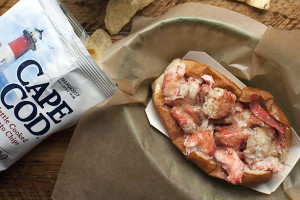Waiter, There’s No Salt in My Soup!
 About a month ago I attended a very posh prosecco tasting at the Back Bay restaurant Azure. Included in the small, lunchtime gathering were about half a dozen local wine writers and food editors, who were greeted in the exquisitely appointed private dining room with a chilled flute of Mionetto Sergio Spumante to tide us over until the arrival of our fashionably late host: The winemaker himself, Sergio Mionetto.
About a month ago I attended a very posh prosecco tasting at the Back Bay restaurant Azure. Included in the small, lunchtime gathering were about half a dozen local wine writers and food editors, who were greeted in the exquisitely appointed private dining room with a chilled flute of Mionetto Sergio Spumante to tide us over until the arrival of our fashionably late host: The winemaker himself, Sergio Mionetto.
A little before noon, Sergio finally breezed in, his charming wife and diligent translator (Sergio studied winemaking, not English, apparently) in tow behind him. For the next three hours, we sampled prosecco after prosecco, each paired with a plate of food from the kitchen, as Sergio (via translator) waxed poetic about his vision for each sparkling star.
Yes, food journalism can be a tedious chore. It was in the middle of the very first course that I became distracted from Sergio’s fascinating tutelage. The salad in front of me, though otherwise well-executed, was underseasoned.
Just a sprinkle of salt would do the trick, to make the flavors of the organic greens and lightly daubed dressing truly sing. Attempting to be subtle, I kept one eye on our host as the other eye scoured the table in search of salinization. Nothing doing. Not a shaker to be seen for miles. I scanned my fellow diners, who seemed to be munching away quite contentedly. Ah, well. Leaving behind half a salad wasn’t going to kill me.
It was when the next course arrived that I decided enough was enough: The beautifully plated seared trout with bacon and some sort of mashed root vegetable (hey…it’s been over a month!) absolutely cried out for a few shakes of the white, granular stuff.
Emboldened by another sip of the most recently poured bubbly (a crisp, berry-nosed Sergio Mionetto Rosé), I motioned for our server. “Hey, could you possibly bring me a little salt, but, uh…kind of under the radar?” I whispered, never quite turning my head away from our Italian-speaking guide. “No problem,” she whispered back, and good as her word, soon returned with a small shaker.
Relief! The flavors of the dish took on a rich and satisfying complexity that I hadn’t detected before.
Moments later, the wine writer to my left, facing Sergio not me, murmured under his breath: “Hey. Mind if I have a little of that?”
“Of course not,” I whispered back, imperceptibly scooting the shaker toward his plate. Or not so imperceptibly, I suppose: I had apparently broken the ice. Pretty soon, an entire table of polite food journalists was smiling and nodding at the animated host, whilst surreptitiously passing that shaker of salt from place setting to place setting without so much as tilting their heads in the direction of said clandestine activity.
During the remainder of the courses, that little shaker must have traveled a full mile. In fact, it’s a surprise we didn’t run out by meal’s end, we shook so much salt out of the diminutive vessel.
Now, don’t get me wrong: I’m not faulting the cooks at Azure for underseasoned food. Perhaps they were instructed by the host to keep the seasoning light so as not to steal the thunder from the delicate flavor profiles of the wines we were sampling. Maybe, like so many chefs, they were catering to a lunchtime crowd of bluehairs who are notoriously unforgiving when it comes to a robust assault of the sodium chloride.
But it brought up one of my pet peeves in any restaurant, especially around Boston, which is not offering salt on the table. It’s a shame an entire table of at least fairly refined palates were so worried about offending our host that we had to resort to stealth.
The notion that a chef (not to mention the line cooks, who are preparing most of your food, anyway) has such a perfectly calibrated palate that his or her creations would be marred by an adjustment of NaCl levels is an arrogant one. We all taste food differently. What’s undersalted to me may taste like a salt lick to you. It’s really a matter of personal preference.
Sure, it’s sort of rude and presumptuous to salt the living daylights out of your just-served plate before giving it a taste, but no chef should be insulted when a diner thinks the food needs salting. It’s far better than having a diner politely suffering, silently hating your food.
(Another, related anecdote: When I worked in the test kitchen at Cook’s Illustrated, we used to send out almost-finished recipes to a group of readers to get their feedback before they got published—to see if any of the techniques were unclear, proportions were off, etc. But one of the biggies was salt level: Tasting food all day long in a test kitchen leads to what some call “palate fatigue,” one aspect of which is a need for extra salt to taste the flavors clearly. The non-test-kitchen tasters, on many, many occasions, helped us correct a too-salty dish before it was too late.)
Ever since that prosecco-addled luncheon, I’ve noted places that I’ve had to ask for the salt, including some of my very favorite restaurants in the city: B&G Oysters (South End), Rendezvous (Central Square), and Prezza (North End), to name a few. In every case, the server has been happy to oblige a request for salt.
But as my appetizer or entree (or dessert, even, if salty pastries is what I’m craving that day…) gradually cools to room temperature as the salt gets couriered to the table, it occurs to me that it would have been nicer not to have to ask.

